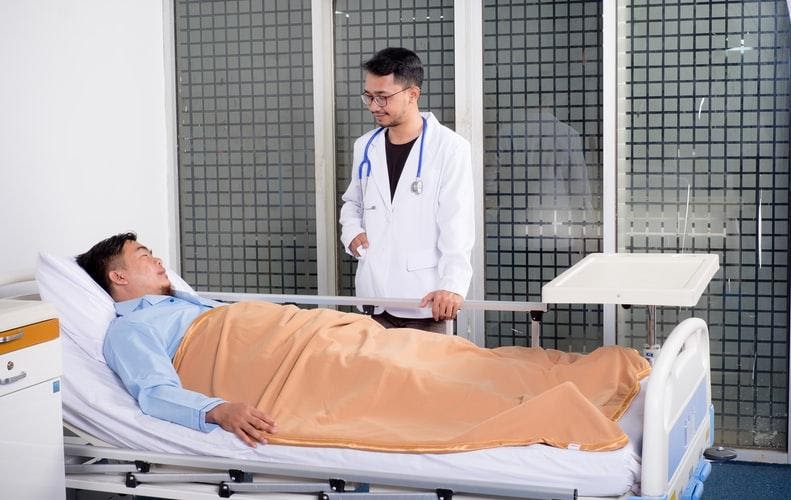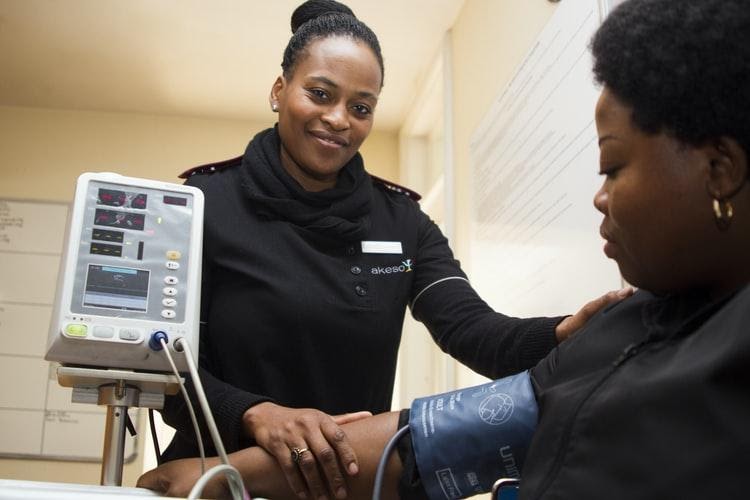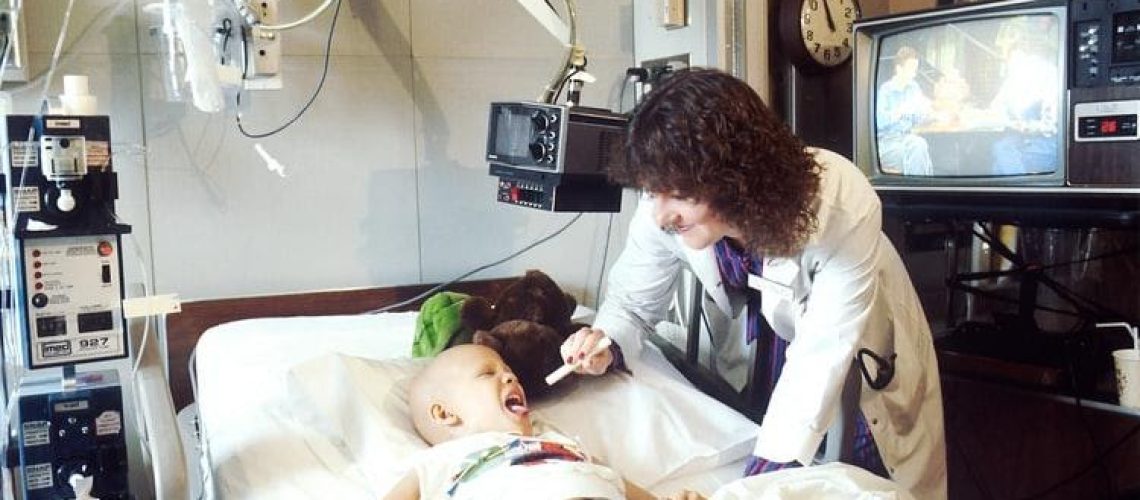To improve patient satisfaction among healthcare organizations, an impartial survey, known as the Hospital Consumer Assessment of Healthcare Providers and Systems (HCAHPS), evaluates each healthcare organization.
The HCAHPS survey not only evaluates patient care, but also influences the organization’s reimbursement. That’s why health organizations should seriously consider ways to improve their HCAHPS scores.
What is HCAHPS?
Hospital Consumer Assessment of Healthcare Providers and Systems (HCAHPS) is a patient-graded report card for hospitals, nursing homes, and other care facilities. The HCAHPS survey assesses different aspects of patient care, including:
- Doctor interaction and care
- Nurse interaction and care
- Education about discharge preparation
- Education on medication
- Housekeeping
- Noise levels
- Assistance with bathroom needs
- Pain management
- Overall hospital experience
Evaluated by the Agency for Healthcare Research and Quality (AHRQ), HCAHPS ensures safe, quality patient care. Depending on how a hospital or clinic scores on their HCAHPS, it affects the facility’s reimbursement.
Why Should You Improve The HCAHPS Score?
The most important reason to improve an HCAHPS score is to provide quality care for the patient. If patient care is exceptional, patient satisfaction and the health organization’s reputation will also be high. To ensure quality patient care, HCAHPS assessment scores directly tie to health organization’s reimbursement.
By financially incentivizing health organizations to improve their overall standard of patient care, the HCAHPS rewards those organizations that make it a priority, and the patient can expect a high standard of care. Failing to meet HCAHPS standards can affect a health organization’s reimbursement by 2%.
Related: Common Modes of Transmission of Infectious Diseases

How to Improve Your HCAHPS Scores
To ensure a favorable HCAHPS assessment, a healthcare organization should consider different ways to improve patient care and education. Here are five ways to dramatically improve your HCAHPS scores.
Often, doctors and nurses are so focused on the treatment or the fast-paced nature of the healthcare organization that the patient feels overlooked or unimportant. Your HCAHPS scores will improve by encouraging doctors and nurses to:
- Improve Communication
- Respond in a Timely Manner
- Reduce Unnecessary Noise
- Keep your Facilities Tidy
- Keep Patients Informed
Improve Communication
To improve the patient’s experience, train your doctors and nurses on proper bedside manner techniques. This will help them be more courtesy and respectful to the patient.
Excellent bedside manners that can improve communication and HCAHPS scores include:
- Introduce yourself to the patient.
- Explain your role in the patient’s care.
- Sit down while speaking with the patient.
- Explain treatment and care in a way the patient will understand.
- Make sure to maintain eye contact as much as possible.
- Listen and empathize with the patient.
Healthcare staff should implement these improved communication techniques with the patient and their patient’s family or support network. The more everyone is informed, better care is provided.
Respond in a Timely Manner
Many of the HCAHPS survey questions evaluate wait times for being admitted, seen, and discharged. The longer a patient waits during their stay significantly impacts patient satisfaction. To decrease wait times, healthcare organizations should take proactive approaches to their call button response, admittance, and discharge procedures.
Call Button Presses
One of the questions on the HCAHPS assessment addresses how prompt nurses are to respond to call button presses. A nursing unit can receive around 7,000 patient calls per month on average. Patients press the call button when they are feeling neglected or if a problem arises. Timely response improves patient satisfaction.
To reduce the number of patient calls and improve response time:
- Anticipate patient’s needs to reduce call button presses.
- Communicate with the patient about when you will return to check on them.
- Look for signs of emotional support in the patient’s room. If they don’t have enough support items or people, this patient may need additional support and frequent checks.
- Make sure to listen with 100% attention. It only takes 90 seconds to make eye contact and listen.
- Be kind and empathetic.
- Remember anxiety and anger are side effects of fear.
- Make sure the patient’s phone is charged and within reach.
- Ensure they have enough food and water.
- Find out if they need assistance to use the bathroom.
- Check all equipment that might sound alarms.
- Perform a final round before you go on break and/or leave for the day.
Admittance and Discharge Procedures
According to a Software Advice study, 97% of patients are frustrated by long waits. And 55% of patients wait longer than fifteen minutes in the waiting room to see a doctor. It’s no wonder patients score this section low on the HCAHPS assessment.
To reduce wait times for patient admittance and discharge:
- When possible, gather patient information before their appointment.
- Assign documentation to other staff.
- Utilize secure messaging.
- Enforce a strict no-show and late arrival policy.
- Identify bottlenecks and pad scheduling to accommodate.
- Use a mobile queue solution.
- Utilize telehealth solutions.
- Ensure your reception area is inviting and comfortable.
Reduce Unnecessary Noise
Because healthcare facilities can be noisy because of equipment, the noise can disrupt and exacerbate a patient’s pain and ability to heal. One of the HCAHPS survey questions evaluates the noise level in the patient’s room. Unfortunately, this question consistently earns low marks.
Healthcare organizations need to adopt a culture of quiet to reduce unnecessary noise to improve HCAHPS scores. The Wall Street Journal reported on 13 ways hospitals are reducing noise levels:
- Utilizing a secure HIPAA-compliant texting platform and using wireless headsets to reduce overhead paging and phone calls.
- Diminishing the intensity and frequency of medical alarms.
- Installing sound-absorbing ceiling tiles and carpets.
- Playing ambient white-noise machines in patient’s rooms.
- Dimming lights to create a more whispered atmosphere at night.
- Designating sleep hours that cut back on routine checks.
- Talking quietly among staff.
- Allowing patients to post do not disturb signs and close their doors.
- Providing sleep masks, earplugs, and puzzles to patients.
- Offering calming music and images on the television.
- Providing headsets for TVs and iPads.
It is also essential to assess noise levels when purchasing new equipment and to keep noisier equipment away from patient rooms as much as possible.
Keep your Facilities Tidy
Good housekeeping is vital to a positive patient experience. Rooms and bathrooms should be inviting, sterile, and tidy. The Center For Disease Control and Prevention (CDC) sites that 100,000 people die annually from diseases acquired inside US hospitals. Follow these steps to keep rooms clean and reduce the spread of infection:
- Wear gloves properly.
- Ensure high-touch areas are properly sanitized every day and between patients.
- Start cleaning at the cleaner areas of the facility and work towards the dirtier areas to reduce spread.
- Limit air pollution by tying trash bags without releasing excess air and rolling soiled bed clothes before placing them in linen bins.
- Avoid cross-contamination by removing and disposing of contaminants right where they are.
- Make sure all regulated medical waste is disposed of properly.
- Minimize chemical content that can irritate patients and cleaning staff.
Clean rooms and bathrooms will relieve anxiety among patients and increase patient satisfaction.
Need a better solution for regulated medical waste (RMW) than a hauler or incinerator? Learn how Sterilis Solutions’ on-demand remediation device is a cost-effective, sustainable alternative.
Related: How to Achieve Sustainability in Healthcare

Keep Patients Informed
Another way to improve HCAHPS scores is to educate the patient throughout their stay. Every time a member of the staff interacts with the patient, they can inform them about:
- Procedures
- Their condition
- Medication
- Discharge plans
- Follow-up procedures
When a patient knows what to expect during their stay, they feel empowered and satisfied with their experience. It is also vital to educate patients about their medication, effectiveness, and common side effects.
Future symptom education is a critical aspect of patient care because it explains to patients what they need to watch for once they leave. Ensure the patient understands future symptoms and when to contact their doctor should be a regular discharge duty.
While healthcare professionals can talk to their patients to educate them throughout their stay, Medline Plus recommends using several of these education tools:
- Brochures and printed materials
- Podcasts
- YouTube Videos
- PowerPoint presentations
- Videos or DVDs
- Posters or charts
- Models or visual props
- Group classes
- Trained peer educators
Using mixed media is the best approach to ensure effective education for different learning preferences.
Related: A Guide on How to Dispose of Medical Waste
Conclusion
By implementing many of these strategies to improve HCAHPS scores, healthcare organizations will reap the benefits:
- Patients will be more satisfied with their care.
- The healthcare organization’s reputation will improve.
- The healthcare organization will earn a higher percentage of reimbursement.
Sterilis Solutions offers a sustainable solution for regulated medical waste (RMW). Our on-site, on-demand remediation device turns RMW into harmless confetti that can be safely thrown away in the regular trash—a cost-effective solution to RMW.
Do you want a simple, safe, and sustainable way to dispose of regulated medical waste? Contact Sterilis Solutions to find out more.
- How to Return to Work Safely
 As the year 2020 marched forward, it became evident that COVID-19 would force a lockdown across the U.S., if not across the globe. For seemingly endless months, everyone has had … Read more
As the year 2020 marched forward, it became evident that COVID-19 would force a lockdown across the U.S., if not across the globe. For seemingly endless months, everyone has had … Read more - Steps to Take Following a Needlestick
 It’s not difficult to believe that the healthcare industry is a hazardous industry to work in. Even as the current pandemic has relegated most of the country to their homes, … Read more
It’s not difficult to believe that the healthcare industry is a hazardous industry to work in. Even as the current pandemic has relegated most of the country to their homes, … Read more - What Are Some Examples of Biohazard Waste?
 Table of Contents What are some examples of Biohazard Waste? What is Biohazardous Medical Waste? Primary Categories of Medical Biohazard Waste Disposal of Common Biohazardous Waste If the term “biohazardous … Read more
Table of Contents What are some examples of Biohazard Waste? What is Biohazardous Medical Waste? Primary Categories of Medical Biohazard Waste Disposal of Common Biohazardous Waste If the term “biohazardous … Read more
